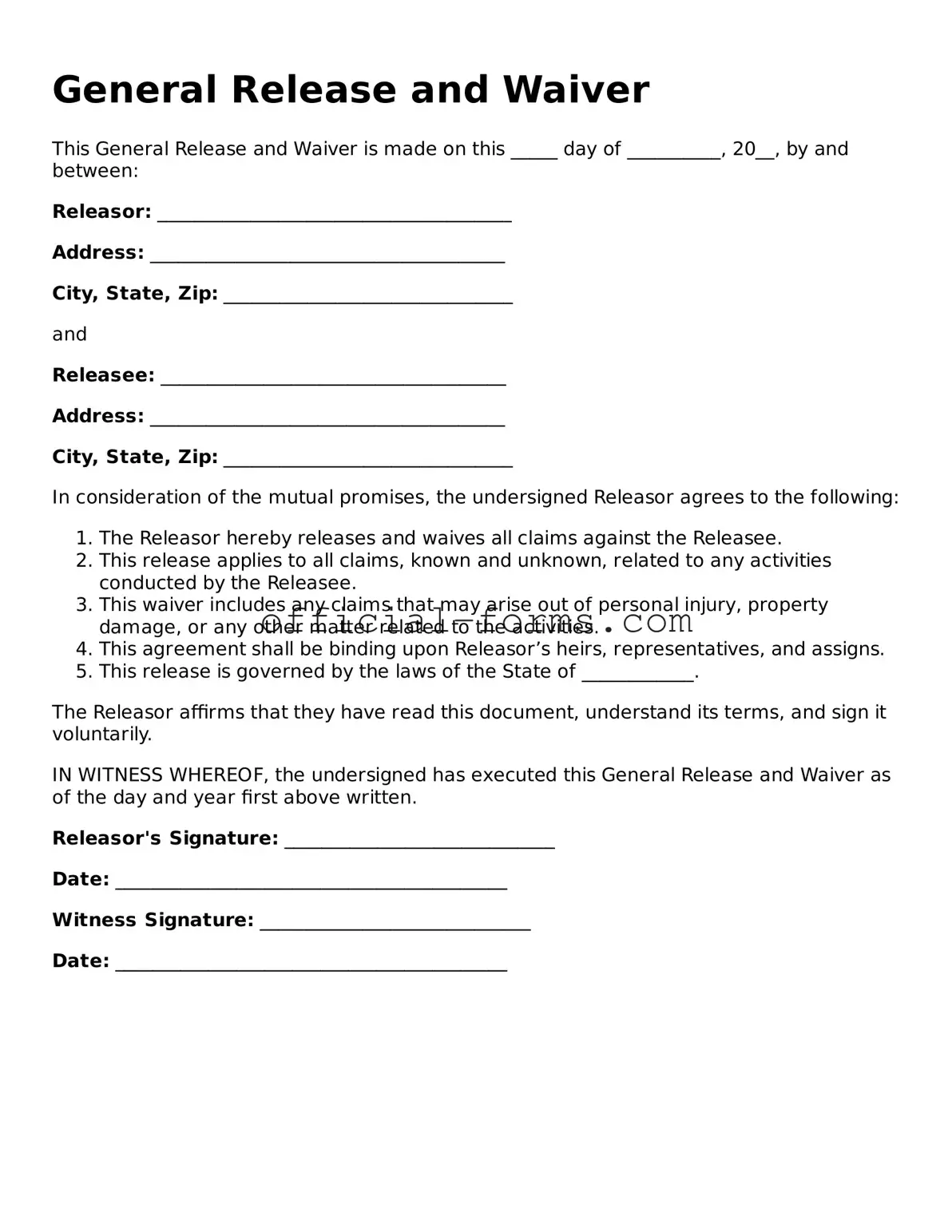The General Release and Waiver form plays a crucial role in various agreements and transactions, offering protection to parties involved by clearly outlining the terms under which one party relinquishes their right to pursue legal claims against another. This form is commonly used in situations such as event participation, service agreements, and settlement negotiations. By signing this document, individuals acknowledge the risks associated with certain activities and agree not to hold the other party liable for any potential injuries or damages that may arise. The form typically includes sections that detail the scope of the release, the parties involved, and any specific conditions or limitations that apply. Understanding the implications of signing a General Release and Waiver is essential, as it can significantly impact one’s legal rights and recourse options in the future. Clarity in the language used is vital, ensuring that all parties comprehend their responsibilities and the extent of the waiver. Overall, this form serves as a protective measure, promoting transparency and mutual understanding between parties while minimizing the risk of future disputes.
